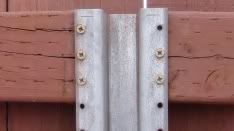G
Guest
I need to get some fencing installed. I'm limited to 4' tall as I'm on a corner. It's a quiet dead-end across from a park. I have a dog that I want to keep in, and I have the usual concerns about keeping others out. The pool has its own fence around it, but it still worries me (newbie here!).
I'm looking at 4' picket fences. Choices are PT posts or cedar posts. Which is better?
Should they be sunk in concrete? One installer concretes all posts; the others only do the gates.
For the pickets and rails, again the choices are PT or cedar.
I'm in NJ and we have carpenter bees that like cedar. I have an older fence that's in great shape, is all PT and has been here for years. But I know that PT methods have changed since that was installed. I've also heard that newer PT wood can twist and split.
I'm looking at fencing contractors, or I can use a handy-man and HD's pre-fab PT fence.
Any suggestions?
Thanks.
Sue
I'm looking at 4' picket fences. Choices are PT posts or cedar posts. Which is better?
Should they be sunk in concrete? One installer concretes all posts; the others only do the gates.
For the pickets and rails, again the choices are PT or cedar.
I'm in NJ and we have carpenter bees that like cedar. I have an older fence that's in great shape, is all PT and has been here for years. But I know that PT methods have changed since that was installed. I've also heard that newer PT wood can twist and split.
I'm looking at fencing contractors, or I can use a handy-man and HD's pre-fab PT fence.
Any suggestions?
Thanks.
Sue



